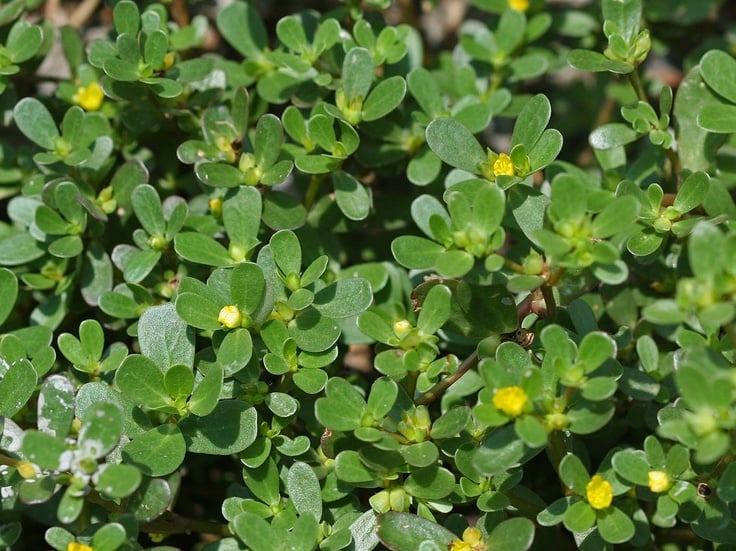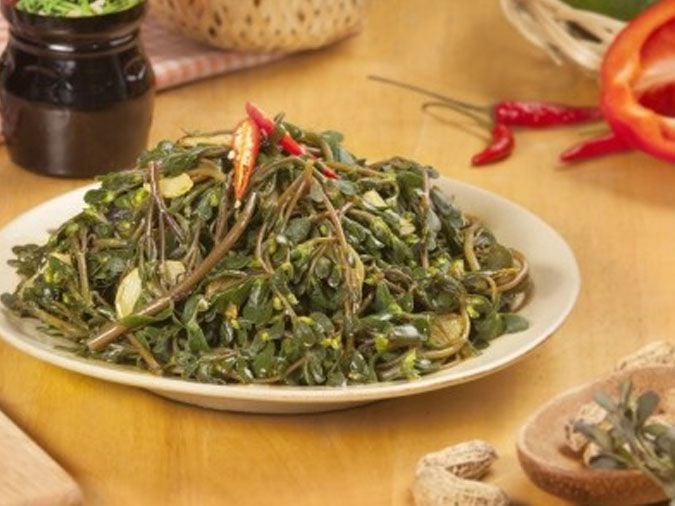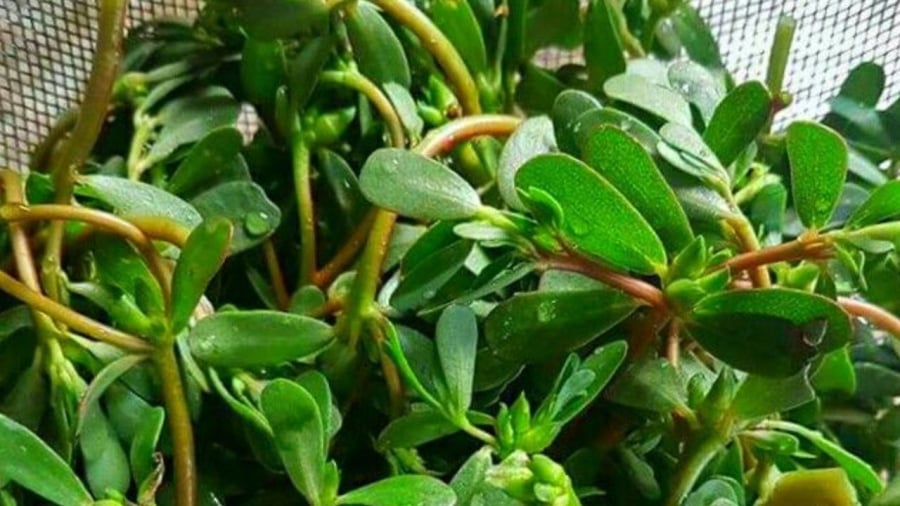Purslane, or Portulaca oleracea, is often found growing wild in paddy fields, fallow land, or damp walls. Once considered a mere weed or fodder for pigs and fish, purslane has now become a sought-after delicacy. Beyond its refreshing tangy taste, purslane surprises with its exceptional nutritional value and remarkable medicinal properties. Let’s explore why this humble vegetable is gaining attention from both homemakers and nutrition experts alike.
1. What is Purslane?
Purslane is a creeping plant that typically grows wild in moist, sunny areas. It has reddish stems, small, succulent leaves, and tiny yellow flowers. Purslane is easy to cultivate, resilient, and requires minimal care. Because of these characteristics, it was once regarded as a “poor man’s vegetable,” consumed only during food shortages.
However, modern research reveals that purslane boasts an impressive nutritional profile, even surpassing many commonly cultivated vegetables.

2. Outstanding Nutritional Profile of Purslane
According to numerous nutritional experts, purslane is one of the few vegetables that naturally contain omega-3 fatty acids, a rare find among green vegetables.
Additionally, purslane is packed with:
- Vitamins A, C, E, and B-complex
- Antioxidants such as flavonoids and betalains
- Minerals including magnesium, potassium, iron, and calcium
- Mucilage and soluble fiber beneficial for digestion
Due to its high nutritional content and safety profile, purslane has earned recognition from both traditional and modern medical practitioners for its therapeutic potential.

3. Amazing Health Benefits of Purslane
Heat-Clearing and Detoxification: With its cooling nature and mild sour taste, purslane helps clear heat, reduce inflammation, and cool the liver. It is particularly suitable for summer consumption to detoxify the body, alleviate internal heat, and treat boils.
Gastrointestinal Support: In traditional medicine, purslane is valued for its antibacterial and anti-inflammatory properties, making it useful in treating dysentery, diarrhea, and gastrointestinal infections. Additionally, the mucilage in purslane protects the intestinal mucosa and improves digestive motility.
Blood Pressure and Cholesterol Management: Modern studies suggest that purslane can dilate blood vessels, reduce blood lipids, and help prevent atherosclerosis and hypertension. This vegetable is especially beneficial for the elderly and those at risk of cardiovascular disease.
Immune Boosting and Antioxidant Properties: The antioxidants in purslane slow down aging, protect cells from free radical damage, and naturally enhance immune function.
Skin Benefits: By cooling the liver and detoxifying the body, purslane is believed to reduce acne, brighten the skin, and even out skin tone. Many people use fresh purslane by pounding it into a paste for topical application or washing affected areas with a decoction of purslane to treat itchy and allergic skin.

4. Purslane: A Delicacy in Rustic Dishes
Apart from its health benefits, purslane captivates palates with its tangy taste, crisp texture, and versatility in cooking. Here are some mouthwatering purslane dishes:
- Purslane and Shrimp Soup: A refreshing dish with a subtle natural sourness.
- Boiled Purslane with Garlic Chili Fish Sauce: Simple yet flavorful, evoking the essence of rustic cuisine.
- Sweet and Sour Purslane Salad: An intriguing blend of flavors that tantalizes the taste buds.
- Stir-fried Purslane with Beef or Eggs: A nutritious combination that boosts protein intake.
- Pickled Purslane: A traditional side dish that aids digestion and enhances appetite.
Nowadays, rustic cuisine restaurants feature purslane as a specialty, offering a taste of nostalgia while aligning with modern healthy eating trends.
5. Precautions when Consuming Purslane
- Avoid excessive consumption if you have a cold constitution or frequent diarrhea.
- Pregnant women should consult their doctors as purslane may induce uterine contractions.
- Thoroughly wash purslane before cooking, especially when sourced from the wild, to remove any parasites and soil residue.
Purslane, once a humble weed, has risen to become a prized vegetable, valued not only for its nutritional content but also for its medicinal wonders. In its journey from weed to delicacy, purslane exemplifies how the simplest things can often hold the most enduring value. If you’re seeking a vegetable that delights both the palate and nourishes the body, purslane is undoubtedly a choice worth considering.

































